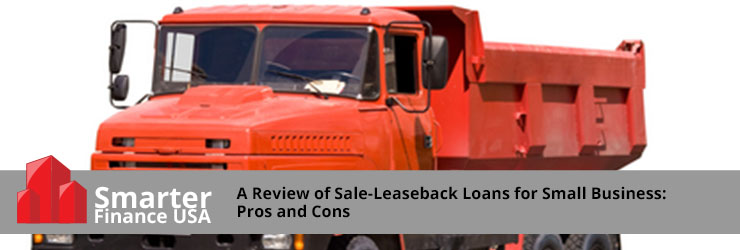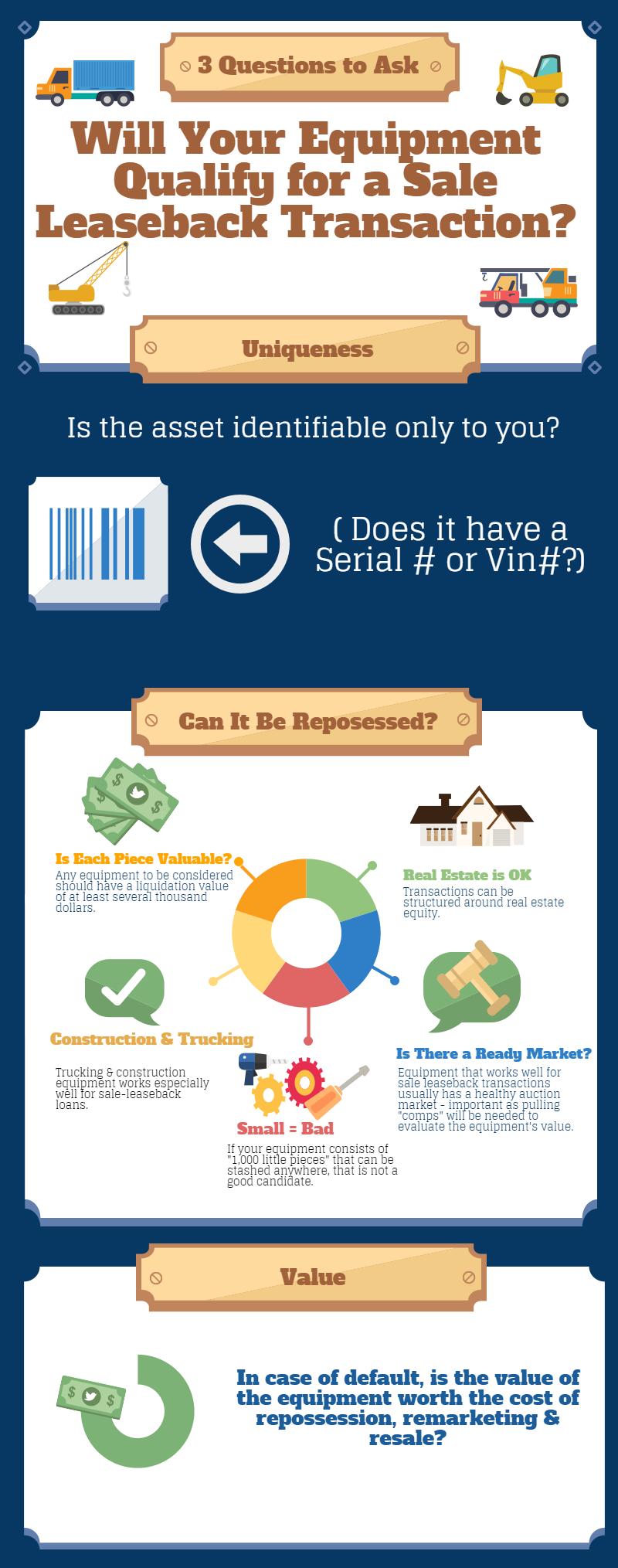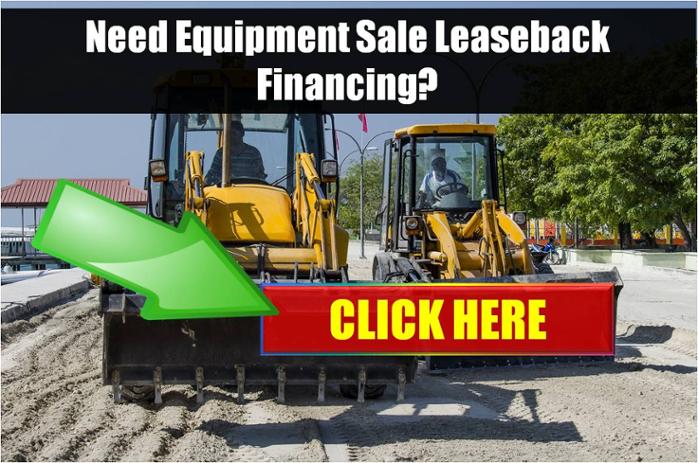

There are numerous methods for small business owners to get their hands on cash, but one of the least known and least used methods is called an equipment sale leaseback transaction.
Sale-leaseback works kind of like an equity loan on your house. If you own equipment (particularly heavy machinery, titled equipment, or construction vehicles) you can use that asset to receive money immediately, and pay it back over a set period of time (typically 3-5 years).
Find out how much you could receive with a sale leaseback here.
3 big advantages to sale leaseback transactions:
1. In most cases, any small business that owns appropriate equipment can qualify, even with usual loan disqualifiers like bad credit or being a startup business.
2. An equipment sale leaseback loan can be made very tax friendly - with your payments classified as "operating costs" - depending on the way the deal is structured, the entire payment can potentially be a tax writeoff.
3. These transactions often have longer terms, lower payments and lower rates than most ways a small business can access funds.
We often get inquiries about sale leaseback loans against equipment that is unsuitable for this type of transaction (such as desks, ipads, etc.) so here are the questions that are normally asked when using equipment as collateral for a loan:

3 drawbacks to a sale-leaseback:
1. The loan is collateralized by your equipment - so if you default, your equipment will be repossessed.
2. Sale leasebacks typically work on a 2 to 1 ratio - if you need $100,000 you'll have to pledge $200,000 worth of equipment.
3. Equipment is valued at "liquidation value" - what the lender would get at auction - which is usually much lower than what you might think the equipment value is.
How a Sale Leaseback Transaction Works:
You can usually borrow up to 50% of the value of assets you pledge - so if you have $100,000 worth of equipment, you might be able to pull $50,000 out of it.
The amount you'll pay depends on your credit - very well qualified borrowers repaying a $50,000 loan over 5 years might pay back $1,200 monthly, while those in the highest risk categories might see payments at a rate of double that amount for the same transaction.
Depending on the structure of the transaction, all payments could be tax deductible.
Comparing a sale-leasback to some other loans for small business, which typically have to be paid back over much shorter periods of time (6-18 months) and carry much higher payments, so many times, if you have equipment to pledge the sale-leaseback can sometimes be a great option.

